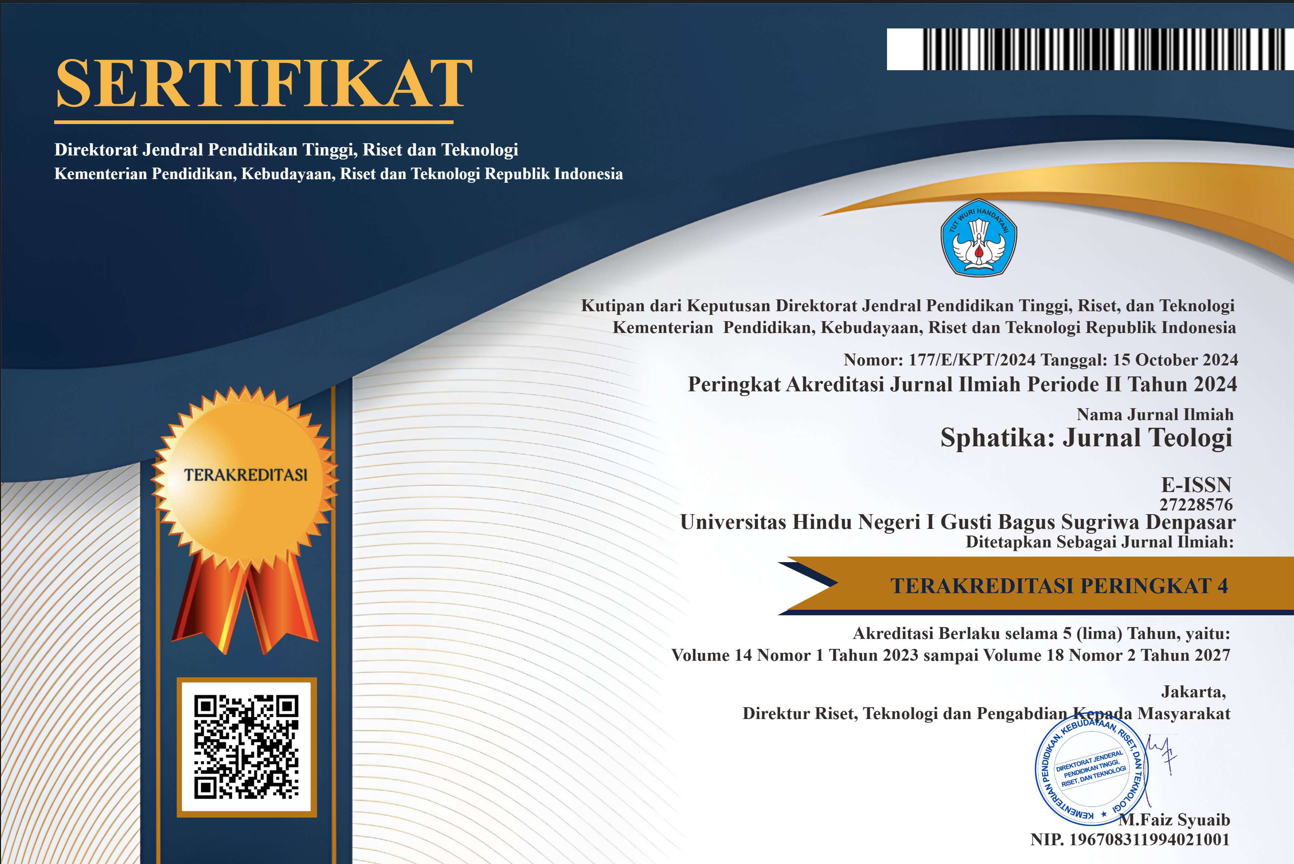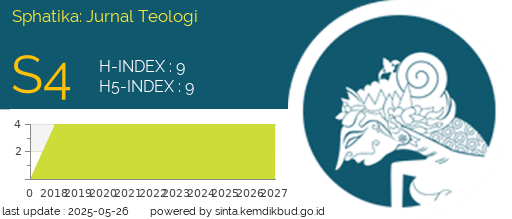Dimensi Aksiologis pada Tata Letak Bangunan di Bali Berdasarkan Lontar Asta Kosala Kosali
DOI:
https://doi.org/10.25078/sphatika.v14i2.3038Keywords:
Balinese Architecture, Lontar Asta Kosala-Kosali, AxiologyAbstract
Bali is unique in its traditions, culture, religious practices, and architecture. All of these are a legacy from generation to generation. The form of Balinese architecture is strongly influenced by the values that are always maintained to remain the identity and uniqueness of the Balinese people. This research aims to explore the value system that develops in Balinese society, with how the value system frames the various cultural diversity owned by Bali, including Balinese architecture. This research uses a qualitative descriptive method with a phenomenological approach. The results of this study show that Balinese design and architecture are strongly influenced by the concept of Tri Hita Karana, a concept in Balinese society as a process of maintaining balance and harmony between God, humans and nature. The concept of Tri Hita Karana is then applied in Balinese architecture in the form of Tri Mandala, which is three spaces that divide one yard. Balinese architecture in Lontar Asta Kosala Kosali is also influenced by the concept of Sanga Mandala as a form of application of the concept of Dewata Nawa Sańga. Then the axiological dimension in the building layout in Bali has religious value, eco-theological value, aesthetic value, and also cultural value. Then, the challenges of Balinese architecture in this era of globalization position that the concept and layout of buildings in Bali still use concepts and also philosophical values that develop in Balinese society, despite regional limitations, but the axiological dimension on a small scale can still be maintained.
References
Arini, I. A. D., & Paramita, I. B. G. (2021). Seni Arsitektur Bali dalam Bangunan-Bangunan Bali (Kajian Filosofis). Maha Widya Duta, 5(1), 76–87.
Arthana, I. N. N. (2017). Dari Teks Menjadi Arsitektur: Interpretasi Terhadap Naskah Lontar Asta Kosala Kosali. Universitas Udayana: Seminar Nasional Arsitektur Dan Tata Ruang.
Dwijendra N. K. (2008). Arsitektur Rumah Tradisional Bali. Denpasar: Udayana University Press.
Gelebet, I. N. (1984). Arsitektur Tradisional Daerah Bali, Departemen Pendidikan dan Kebudayaan, Proyek Inventarisasi dan Dokumentasi Kebudayaan Daerah, Denpasar.
Gelebet, I. N. (1986). Arsitektur Tradisional Bali. Denpasar: Departemen Pendidikan dan Kebudayaan Provinsi Bali.
Julian, D. (2014). Balinese Architecture. United States: Tuttle Publishing.
Paramadhyaksa, I. N. W. (2015). Eksistensi Titik Brahma dalam Tata Ruang Tradisional Bali. Seminar Nasional Dan Tata Ruang Program Studi Perencanaan Wilayah Dan Kota Universitas Hindu Indonesia.
Paramdhyaksa, I. N. W. (2016). Filosofi dan Penerapan Bunga Padma dalam Perwujudan Arsitektur Tradsional Bali. Jurnal Langkau Betang, 3(1), 28–42.
Parwata, I. W. (2011). Rumah Tinggal Tradisional Bali dari Aspek Budaya dan Antropometri. Jurnal Mudra, 26(1), 95–106.
Priyoga, I., & Sudarwani, M. M. (2018). Kajian Pola Ruang dan Rumah Adat Desa Penglipuran Bali. Seminar Ikatan Peneliti Lingkungan Binaan Indonesia.
Suandra, I. M. (1996). Tuntunan/Tatacara Ngwangun Karang Paumahan: Manut Smrti Agama Hindu. Denpasar: Upada Sastra.
Sujadnya, I. G. M. O. (1998). Kenyamanan “Bale Meten” Serta Faktor yang Mempengaruhinya di Desa Gianyar, (Tesis), Denpasar: Program Pasca Sarjana Universitas Udayana.
Sularto, R. (1988). Arsitektur dan Pariwisata Budaya Bali. Denpasar: Building Information Centre, Direktorat Jenderal Cipta Karya PUTL.
Sularto, R. (1989). Sikap Hidup Masyarakat Bali dan Pembangunan. Building Information Centre, Direktorat Jenderal Cipta Karya PUTL, Denpasar.
Sumintardja, D. (1981). Kompendium Sejarah Arsitektur. Bandung: Institut Teknologi Bandung.
Wijaya, M. (2002). Architecture of Bali. Singapore: Archipelago Press.















